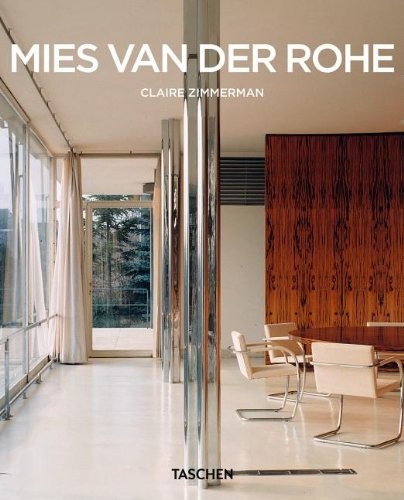Foto 1 di 1

Foto di catalogo

Foto 1 di 1

Foto di catalogo

Mies Van der Rohe Less Is More by Claire Zimmerman (2006, Trade Paperback)
B
Brenham Book Company (1137)
93,9% di feedback positivi
Prezzo:
US $65,47
CircaEUR 56,35
+ $26,53 di spese di spedizione
Restituzioni:
Restituzioni entro 30 giorni. Le spese di spedizione del reso sono a carico dell'acquirente.. La regola varia a seconda del servizio di spedizione.
Condizione:
Less is more: finding perfection in purity Ludwig Mies van der Rohe (1886?. 1969) was one of the founding fathers of modern architecture. The creator of the Barcelona Pavilion (1929), the Farnsworth House in Plano, Illinois (1945?. ).
Oops! Looks like we're having trouble connecting to our server.
Refresh your browser window to try again.
Informazioni su questo prodotto
Product Identifiers
PublisherTaschen
ISBN-103822836435
ISBN-139783822836439
eBay Product ID (ePID)53943980
Product Key Features
Book TitleMies Van Der Rohe Less Is more
Number of Pages96 Pages
LanguageEnglish
Publication Year2006
TopicIndividual Architects & Firms / General
IllustratorYes
GenreArchitecture
AuthorClaire Zimmerman
FormatTrade Paperback
Dimensions
Item Height0.3 in
Item Weight12.5 Oz
Item Length9.1 in
Item Width7.3 in
Additional Product Features
Intended AudienceTrade
Dewey Edition23
Dewey Decimal720.92
SynopsisLess is more: finding perfection in purity Ludwig Mies van der Rohe (1886?1969) was one of the founding fathers of modern architecture. The creator of the Barcelona Pavilion (1929), the Farnsworth House in Plano, Illinois (1945?1951) and the Seagram Building in New York (1954?1958), Mies was one of the founders of a new architectural style. Well known for his motto ?less is more, ? he sought a kind of refined purity in architectural expression that was not seen in the reduced vocabulary of other Bauhaus members. His goal was not simply building for those of modest income (Existenzminimum) but building economically in terms of sustainability, both in a technical and aesthetical way; the use of industrial materials such as steel and glass were the foundation of this approach. Though the extreme reduction of form and material in his work garnered some criticism, over the years many have tried'mostly unsuccessfully'to copy his original and elegant style. This book explores more than 20 of his projects between 1906 and 1967, from his early work around Berlin to his most important American buildings. Basic Architecture features: ? Each title contains approximately 120 images, including photographs, sketches, drawings, and floor plans ? Introductory essays explore the architect's life and work, touching on family and background as well as collaborations with other architects ? The body presents the most important works in chronological order, with descriptions of client and/or architect wishes, construction problems (why some projects were never executed), and resolutions ? The appendix includes a list of complete or selected works, biography, bibliography and a map indicating the locations ofthe architect's most famous buildings, Less is more: Finding perfection in purity Ludwig Mies van der Rohe (1886-1969) was one of the founding fathers of modern architecture. The creator of the Barcelona Pavilion (1929), the Farnsworth House in Plano, Illinois (1945-1951) and the Seagram Building in New York (1954-1958), Mies was one of the founders of a new architectural style. Well known for his motto "less is more," he sought a kind of refined purity in architectural expression that was not seen in the reduced vocabulary of other Bauhaus members. His goal was not simply building for those of modest income but building economically in terms of sustainability, both in a technical and aesthetical way; the use of industrial materials such as steel and glass were the foundation of this approach. Though the extreme reduction of form and material in his work garnered some criticism, over the years many have tried--mostly unsuccessfully--to copy his original and elegant style. This book explores more than 20 of his projects between 1906 and 1967, from his early work around Berlin to his most important American buildings. About the Series: Each book in TASCHEN's Basic Architecture Series features: an introduction to the life and work of the architect the major works in chronological order information about the clients, architectural preconditions as well as construction problems and resolutions a list of all the selected works and a map indicating the locations of the best and most famous buildings approximately 120 illustrations (photographs, sketches, drafts and plans)
Tutte le inserzioni per questo prodotto
Scrivi una recensione per primo










